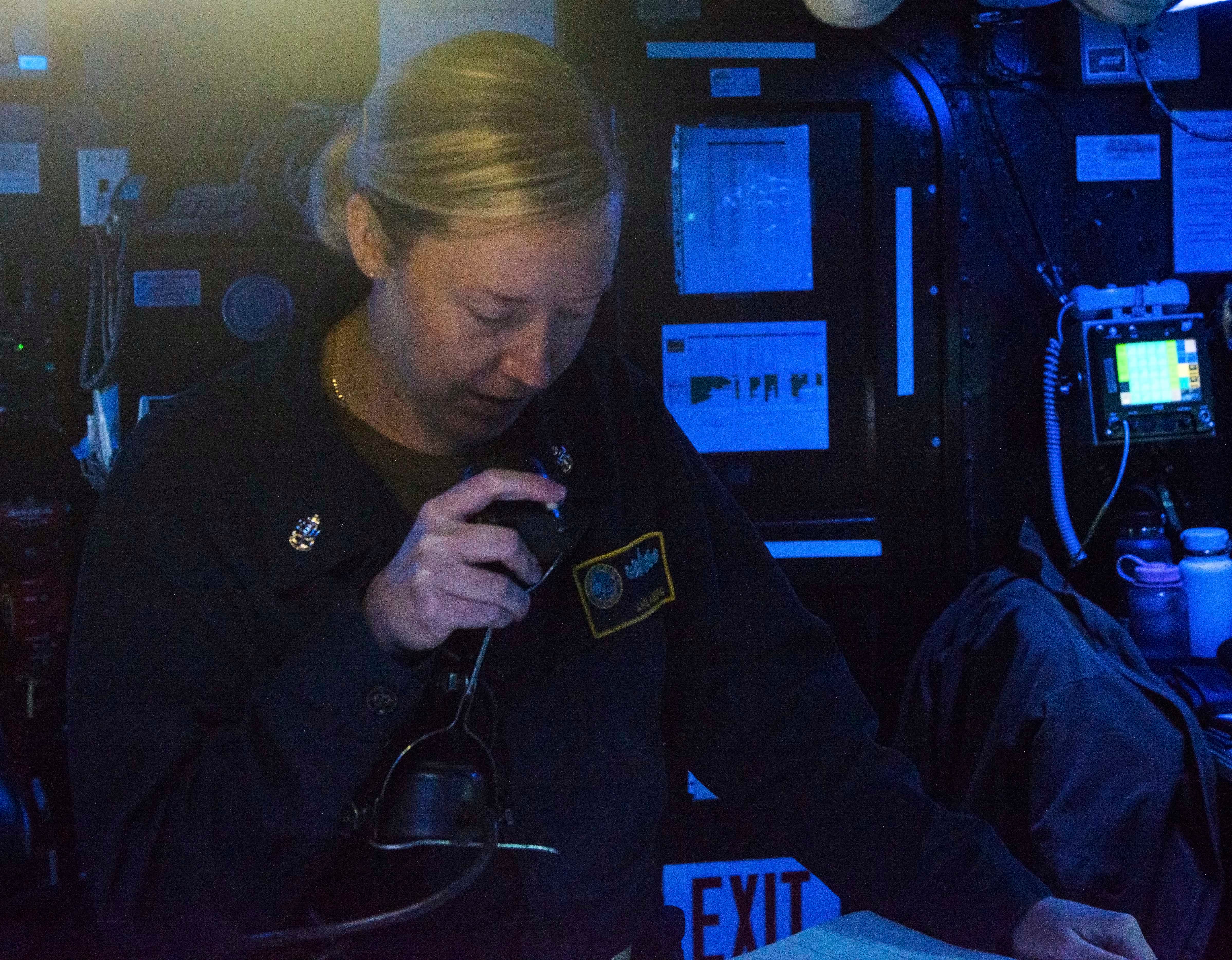NAVAL BASE NORFOLK, Va. — In the minds of its crew, the aircraft carrier Dwight D. Eisenhower was steaming along in the Mediterranean Sea, fighting a war in Europe along with the carrier Gerald R. Ford.
In reality, however, the Ike was sitting pierside at Naval Station Norfolk, Virginia, while the Ford is actually deployed to the region, sailing in U.S. 6th Fleet waters with the command and control ship Mount Whitney.
On their screens in the command center, the staff of Carrier Strike Group 2 could see the missiles and aircraft coming their way and how U.S. sailors were responding.
The Ike and Ford were among six carrier strike groups — two live and four virtual, spread across all seven U.S. fleets — that participated in the Navy’s Large Scale Exercise 2023. Also took part: six amphibious ready groups (two live, four virtual), and 25 live and 50 virtual ships.
The global training event, Aug. 9-18, brought together the combined firepower of the Navy and Marine Corps team, 25,000 personnel to test their ability to mass and coordinate large scale formations around the world as sailors and Marines tackled realistic scenarios akin to what they might experience in conflict.
RELATED
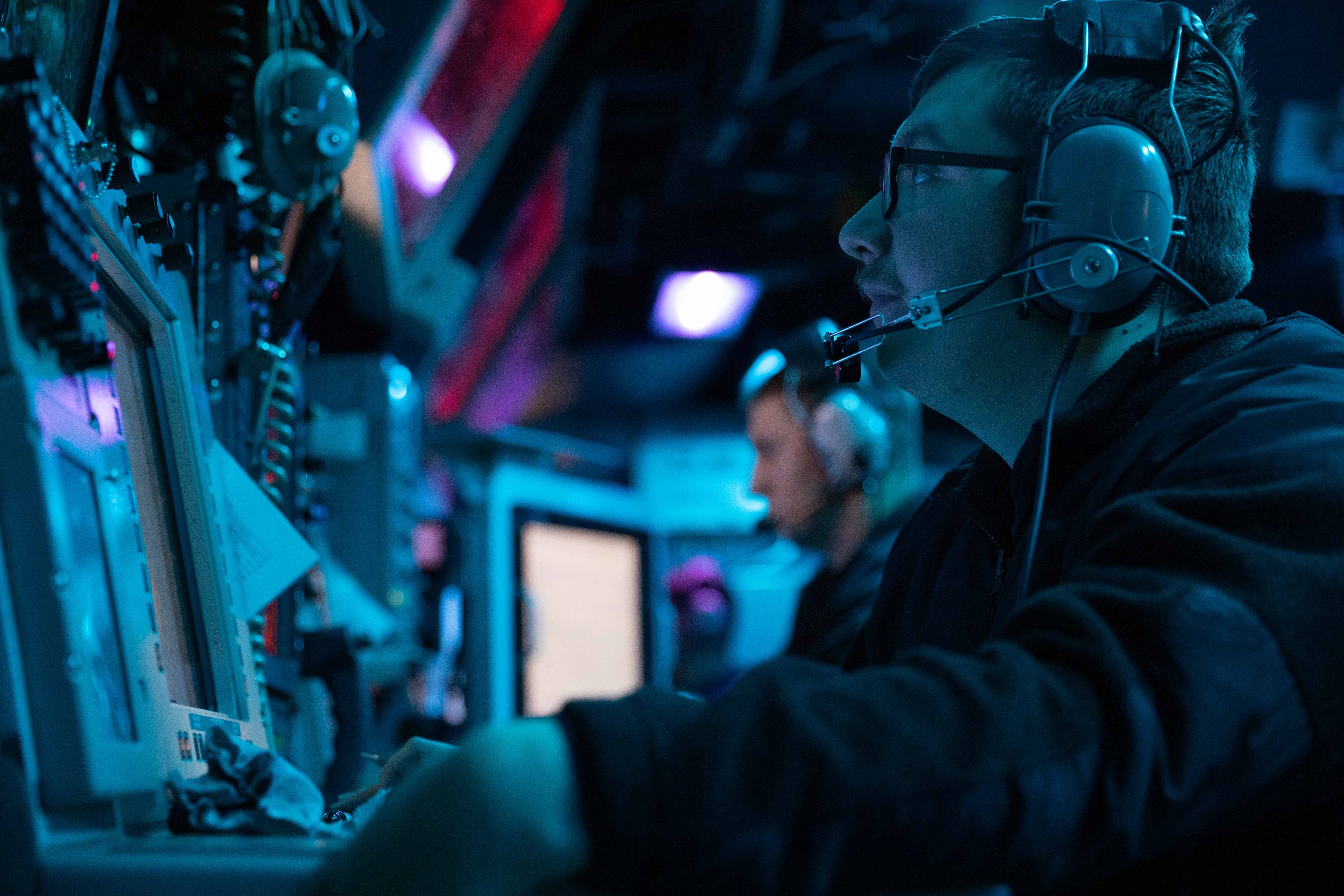
“The ability to command and control our operations across 22 time zones is how we will fight and win in a global environment against our competitors,” said Adm. Daryl Caudle, the head of U.S. Fleet Forces Command. “To do so, we have to globally synchronize precision and timing in order to conduct high-end modern warfare.”
The Ike, which recently completed its Composite Training Unit Exercise ahead of a deployment later this year, was operating very much like it would if it actually on U.S. 6th Fleet during combat, Rear Adm. Marc Miguez, Carrier Strike Group 2 commander, told reporters on the flight deck of the Eisenhower Aug. 11.
The COMPTUEX “is probably one of the most dynamic and most stressing situations that we put our watchstanders through and our aircrew through,” Miguez said. “We actually simulate, in the training environment, us being shot at by threat aircraft, threat ships and and threat land-based [cruise missiles] … that we could incur if we go into a combat operation once we deploy.”
While COMPTUEX, a certification required for deployment, forced the Eisenhower Carrier Strike Group to address singular threats, Large Scale Exercise’s simulations presented multiple conflicts and threats simultaneously.
“What we’re doing for LSE 23 is we’re actually having two major threats at the same time,” Miguez said. “We did not do that for COMPTUEX. So, that is a slight nuance, and it’s going to give us exposure just in case this happens in real time.”
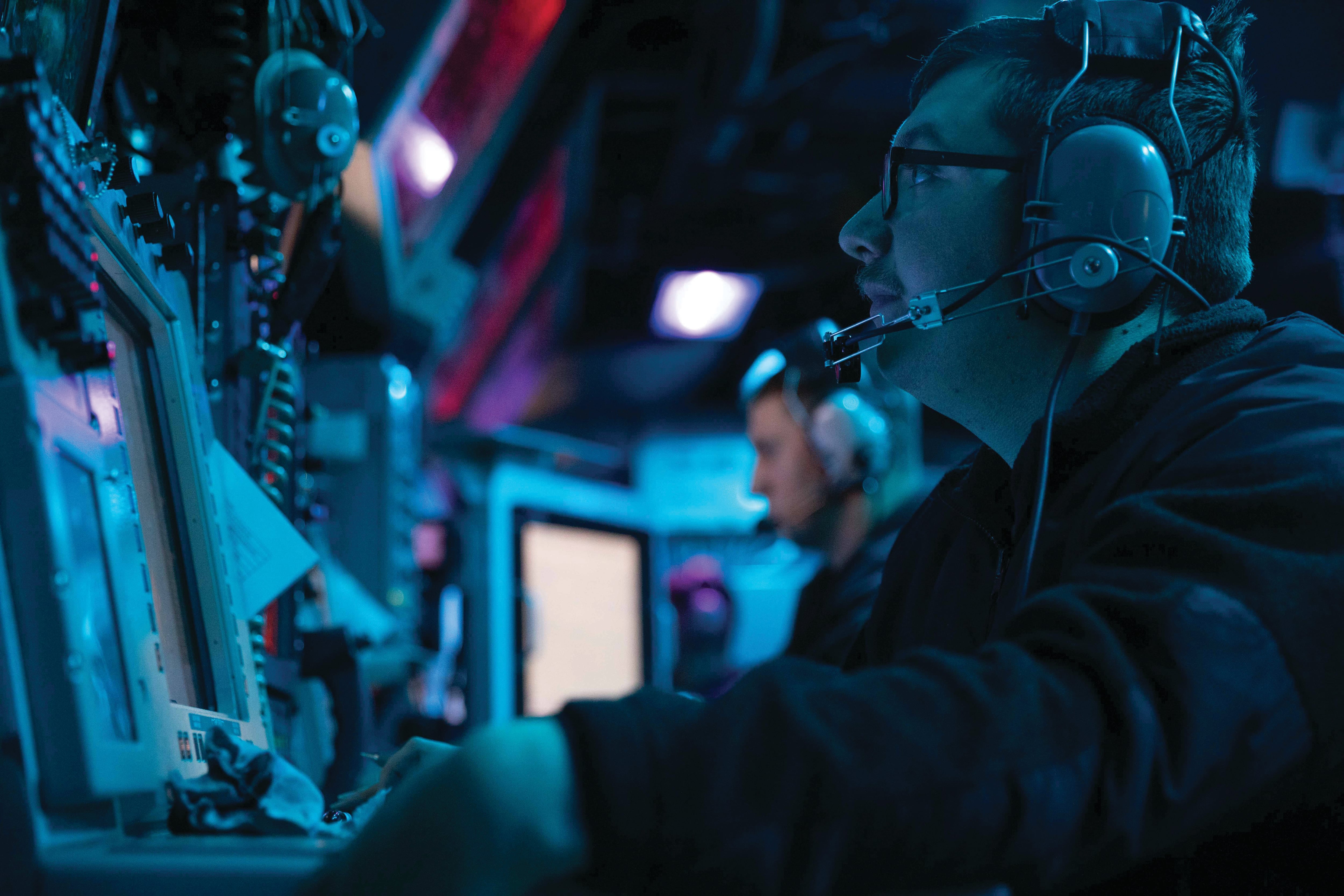
The main objective for Miguez’s crew was to provide the Navy’s 6th Fleet with the necessary combat power to address any and all threats in that theater of operations. Meanwhile, other carrier strike groups in other regions of the world were tackling completely separate conflicts and threats, he said.
“We’re in a defensive deterrence mindset, and we’re conducting presence operations,” Miguez said. “But as this scenario will unravel, we’re going to be put into a pretty stressful situation where we may have to obviously execute kinetic activity.”
Multiple threats
The Navy and the Marine Corps’s main objective for Large Scale Exercise was to globally synchronize operations to counter multiple threats in different geographic regions simultaneously.
While a lot of the exercise was simulated, both in terms of where Navy and Marine Corps units were operating and the threats they faced, much of it was carried out at by units and personnel at sea, in the air and on the ground.
In the Philippine Sea, the Reagan Carrier Strike Group was conducting flight operations to protect America’s interests in the Indo-Pacific and counter regional threats.
Meanwhile, in the Atlantic Ocean, the commander of Destroyer Squadron 28 and crew members of the destroyer Porter discussed safe navigation and positioning in the ship’s combat center during a simulated transit of the fictitious Beryl Strait. Up on deck, a gunner’s mate loaded rounds into a M2A1 .50 caliber machine gun to prepare for the crossing.
Elsewhere in the Atlantic, sailors assigned to Explosive Ordnance Disposal Mobile Unit 12, working off the dock landing ship Gunston Hall, loaded into a rigid-hull inflatable boat to conduct an underwater detonation exercise.
Further west, members of Marine Air Control Squadron 2, 2nd Marine Aircraft Wing, set up an AN/TPS-80 Ground/Air Task Oriented Radar system as part of a larger tactical air operations center at Camp Lejeune, North Carolina. The scenario under which they worked was designed to test the center’s survivability.
Not far away, at Seymour Johnson Air Force Base in North Carolina, Seabees from Naval Mobile Construction Battalion 11 and U.S. Marines cleared debris from a simulated crater and filled it will concrete as part of an airfield damage repair operation.
Missions such as these were playing out across the globe. Participating in the exercise were U.S. Fleet Forces Command, U.S. Pacific Fleet, U.S. Naval Forces Europe-Africa Command, Marine Forces Command, U.S. Marine Corps Forces Europe and Africa, and U.S. Marine Corps Forces Pacific.
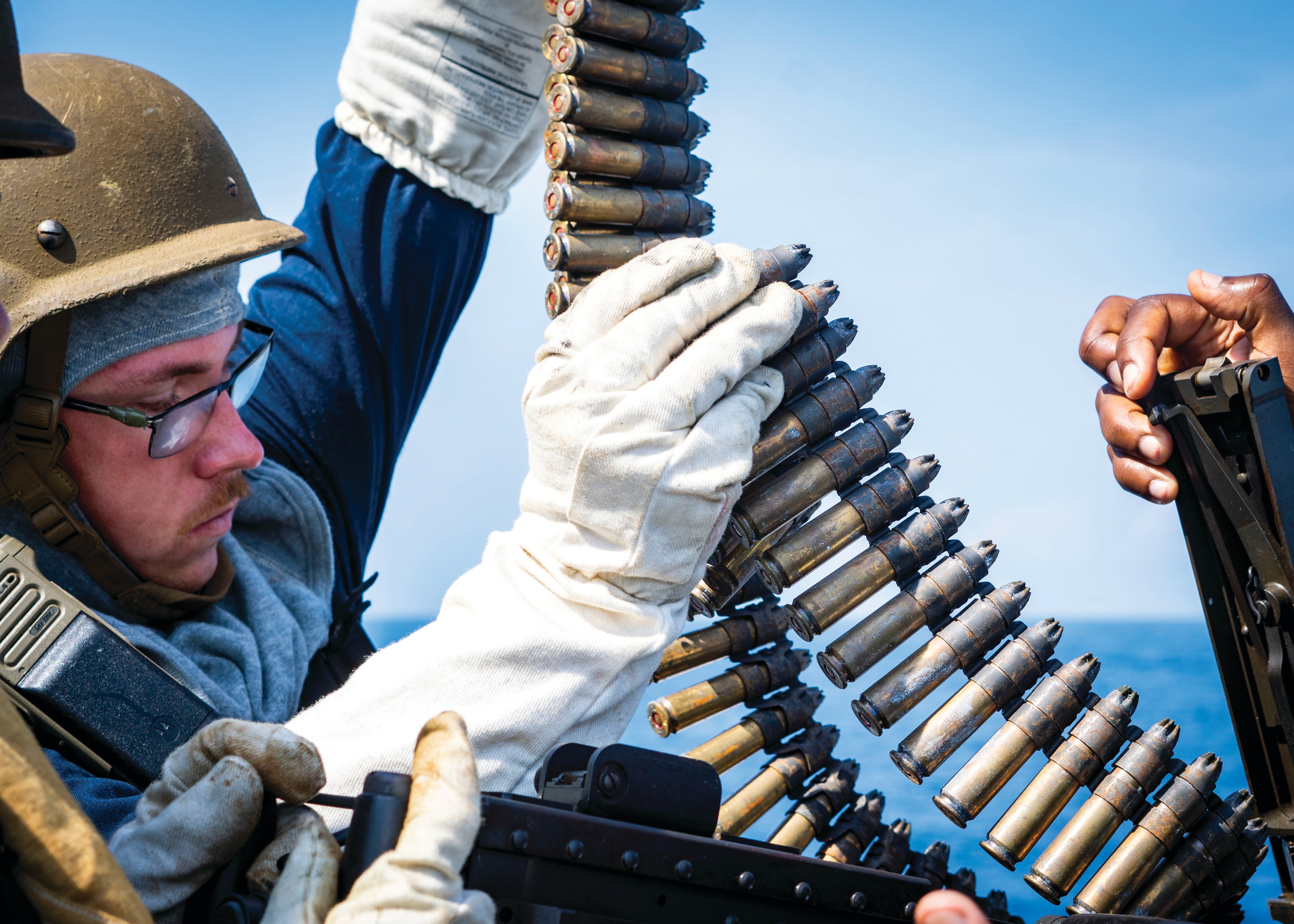
As the exercise wore on, the threat scenarios grew more intense.
Coordinating a global Navy
Navy leaders anticipate a future conflict won’t be regional. That’s why the exercise looked to assess and refine concepts like distributed maritime operations to improve warfighting effectiveness against strategic competitors, according to Navy leaders.
It’s part of the Navy’s push toward fleetwide, coordinated naval formations, larger than traditional carrier strike groups. This “distribution” can be realized by spreading these formations out and by increasing the number of forces within the area of operations, bringing surface ships, fighter aircraft and bombers, and land-based forces to mass fires on enemy targets.
“Large Scale Exercise recognizes that we are a global Navy,” Adm. Samuel Paparo, commander of U.S. Pacific Fleet, told reporters Aug. 11.
“You’ve seen recent real world examples where our competitors are more increasingly operating with one another and are more increasingly sailing and operating further afield,” he said. That “further underscores the need for Large Scale Exercise in our ability to find, track and monitor potential threats and to do so across the world among commanders whose headquarters are linked at all times,” Paparo said.
The Navy and Marine Corps live units worked in tandem with 30 virtual ones, some participating pierside like the Eisenhower, others at training facilities and staff headquarters around the world.
RELATED
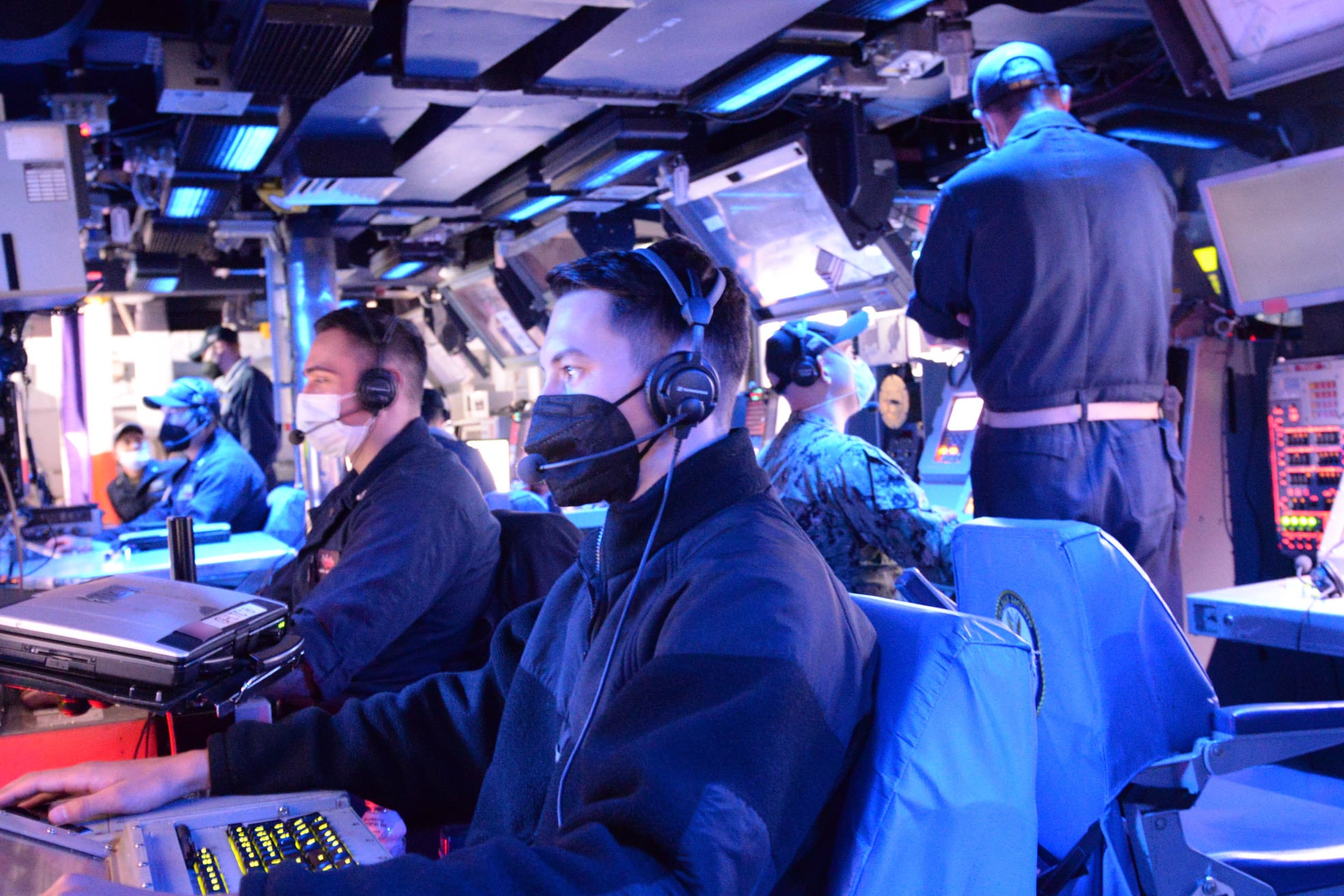
“What makes this exercise unique is that we have both the friction of real forces as well as the scale virtual forces offer, and it’s all in a very intense period,” said Adm. Stuart Munsch, U.S. Naval Forces Europe and U.S. Naval Forces Africa commander,.
Stressing command centers by introducing virtual units and virtual threat activity aims to acclimate them to a warfighting tempo and develop habits to effectively counter or eliminate those global threats, according to Paparo.
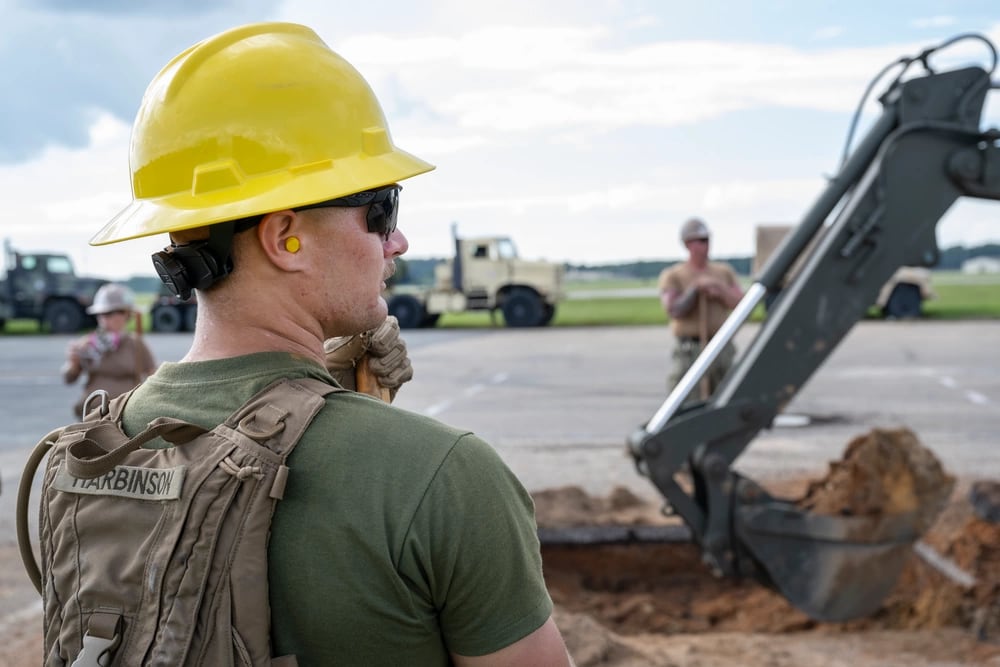
Focused on both the operational and tactical level of warfare, the exercise relied on input and decision-making from three- and four-stars to the most junior sailors and Marines operating across the world.
The exercise also pulled in roughly a dozen retired flag and general officers to step into various roles like the defense secretary for the simulation.
Practicing distributed maritime operations at the tactical level is critical because until they are carried out on real terrain and in real water, “it’s just a bunch of concepts on paper,” Paparo said.
“The saying is, ‘the more you sweat in training, the less you bleed in conflict.’ And that’s what’s important here,” Paparo said.
Stress to the max
To become a more globally coordinated joint force, the exercise’s primary goal was to evaluate — and stress to the point of failure — concepts including distributed maritime operations, expeditionary advanced base operations, and littoral operations in a contested environment.
By applying and testing these concepts during Large Scale Exercise, the Navy and Marine Corps attempted to challenge thinking on how the services can best maneuver, distribute and integrate forces. This is a departure from previous naval operations where a single strike group focused on more regional threats, said Capt. Chris Narducci, the lead planner for the exercise.
“We used to statically operate. We’d park a carrier strike group somewhere and execute,” Narducci said. “Those days are over when it comes to our strategic competitors. We cannot just sit there.”
“We need to know how to fight better and how to operate on that global scale because it’s not going to be a regional conflict with our strategic competitors,” Narducci said. “It will be a global event because they are globally distributed themselves.”
Distributed maritime operations allow the Navy and Marine Corps to “exploit uncertainty and achieve surprise,” according to a tri-services maritime strategy document released in 2020.
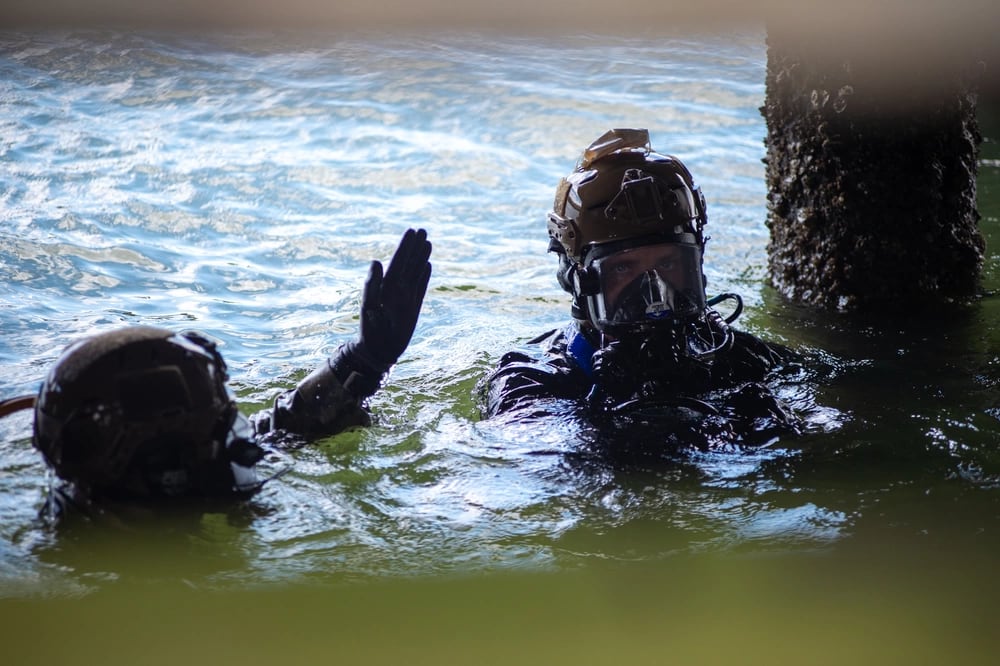
Ultimately, this distribution of forces “gives us the ability to mass fires under the principles of expanded maneuver,” Paparo said. “That has been enabled by our ability to disaggregate sensor, shooter and platform to be able to achieve massive fires on particular centers of gravity while dispersing and operating formations more dynamically.”
Large Scale Exercise tested the spread of forces in numerous ways.
For example, it exerted pressure on cross-coordination between the various geographic regions, Caudle told reporters. Adversaries will understand those limitations and will attempt to test whether U.S. forces are well-coordinated across geographic boundaries — or see if they can take advantage of potential weaknesses, he said.
“It’s easy to operate your own forces within your own operational area,” Caudle said. “Now, that may be challenged, because war is hell kind of thing.”
“Being able to command and control forces effectively, in a structure that’s not necessarily designed to do that well — there is great learning and value there,” he said.
Another crucial element with distributed operations is logistics as naval elements span all areas of the globe. That means leaders must make complicated decisions about where best to share assets and resources, and created additional tension in the simulation.
“If you can’t do distributed logistics, you’re going to be in trouble,” retired Adm. James Foggo, the exercise’s senior role player for higher headquarters, told reporters.
“We’re stressing the force. There’s just not enough stuff to go around,” Foggo said. “So, somebody’s going to get what they need here. Somebody else here may have to wait a little bit. But where are the priorities?”
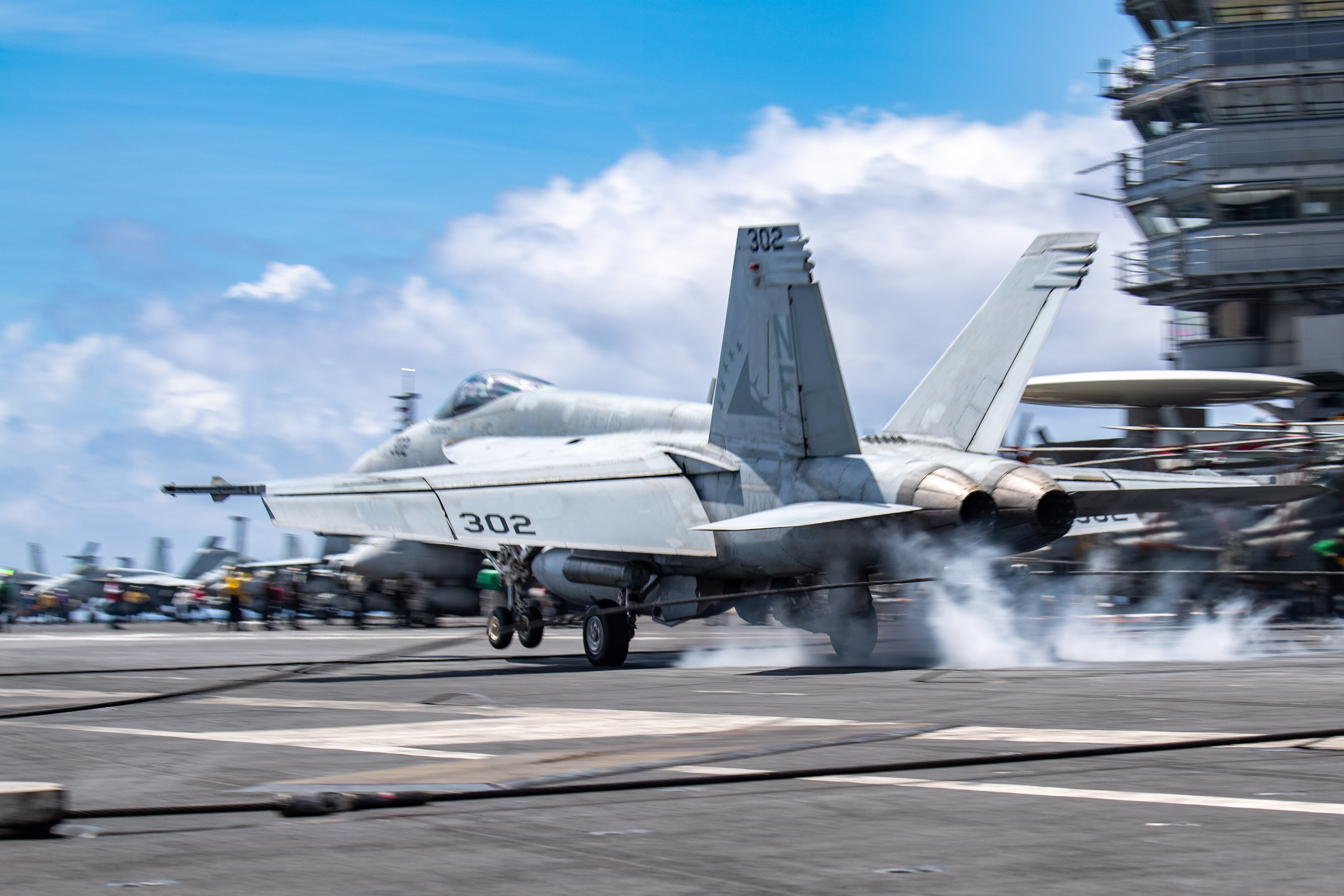
Integrating Navy and Marine operations
The Marine Corps is working to enhance its support of naval operations, and the exercise provided an opportunity to test concepts like expeditionary advanced base operations and littoral operations in a contested environment.
Rather than focusing on just amphibious operations, littoral operations in a contested environment encompass a more integrated approach with the Navy to assert maritime dominance through both sea- and land-based capabilities, according to a 2017 Marine Corps document.
“It’s using Marine sea- and land-based capabilities to control the sea,” Narducci said. “And then that’s supported by expeditionary advanced base operations. … There’s many challenges out there when we’re in a littoral, so we need to have … these expeditionary advanced bases in order to execute sea control and sea denial using combined Navy and Marine Corps capabilities.”
Marines conducted multiple training events to apply these concepts. Near Marine Corps Air Station Cherry Point in North Carolina, for example, they practiced refueling CH-53E helicopters at a remote forward arming and refueling point.
The focus was to hone integration and strengthen communications between the Navy and the Marine Corps. This will allow the Marines to operate in smaller detachments in a forward littoral environment, according to Marine Corps Col. Ginger Beals, commanding officer of Combat Logistics Regiment 2.
“This is simulating, if we needed to, that the aircraft could come forward, they could refuel, they could go out on the ship,” Beals told reporters in North Carolina. “And then they could deploy with them into whatever’s needed, whether it’s crisis response for humanitarian assistance, whether it’s kinetic environment.”
This enables aircraft to operate in more austere environments, and permits pilots to extend their range of operations, Beals said.
Combat Logistics Regiment 2 provided support during fuel exercises to the 2nd Marine Aircraft Wing. The regiment also communicated with amphibious transport dock New York and Carrier Strike Group 4, which conducts training and certification for ships assigned to U.S. Fleet Forces and U.S. 2nd Fleet.
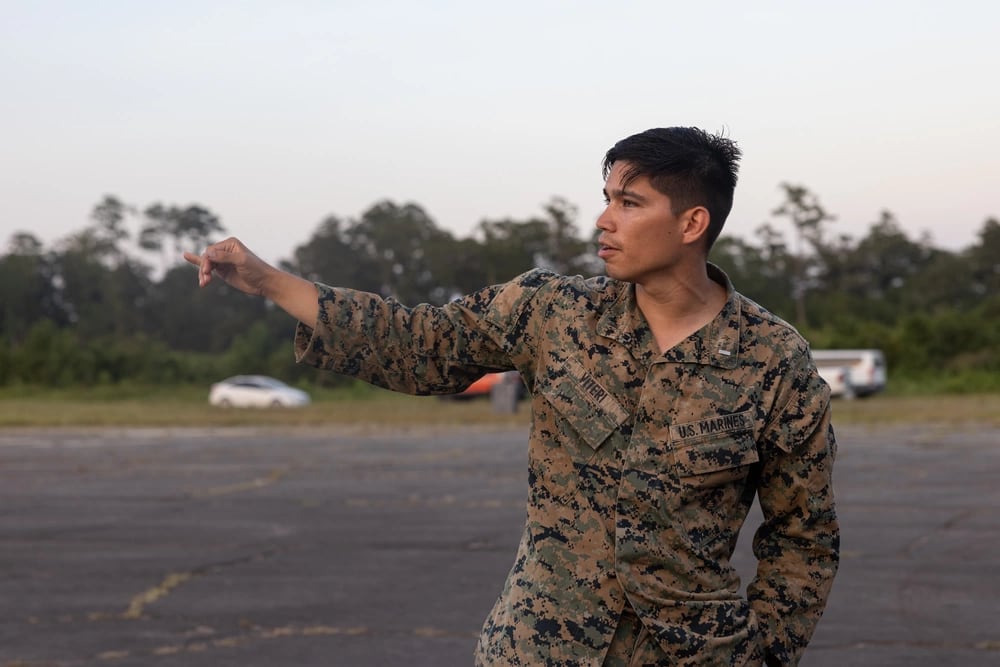
Large Scale Exercise challenged forces to work in a more dispersed manner than they ordinarily do, said Marine Corps 1st Lt. Anthony Viteri, a combat engineer with Marine Wing Support Squadron 271.
“The difference would be just a smaller footprint, more spread out,” Viteri said. “So, instead of being in a large built-up area, we’re in multiple different locations, with less people still being asked to do the same thing.”
This is a key tenant of distributed maritime operations. According to Foggo, disaggregating forces by distributing them to various expeditionary advanced bases presents targeting problems for the enemy, as does aggregating those forces again.
“That’s what DMO is all about — and bringing [them] together into a combat-capable power projecting, lethal organization that’s going to strike the enemy and destroy the forces,” Foggo said.
One of the key differences between this year’s exercise and the first iteration of Large Scale Exercise is that it took into account the actual size of the force, rather than inflating it with simulated forces. That hasn’t always been the case and therefore, made the exercise more practical, according to Rear Adm. Eugene Burcher, the exercise director.
“Most exercises, you assume various different things,” Burcher said. “We’re using actual numbers and that forces that tension and makes the exercise much more realistic.”
At the same time, the exercise also factored in the actual force size of enemy forces to present the most realistic scenarios.
Multiple reports detailing lessons learned will emerge as a result, said retired Adm. Scott Swift, a senior role player for higher headquarters. Planning for Large Scale Exercise 2025 was set to begin the day after this year’s exercise concluded.
“This is about learning,” Swift said. “We’re going to push this thing until it’s really hard for [U.S. sailors and Marines] to win,” Swift said. “We want to find the failure points.”
